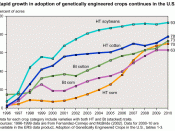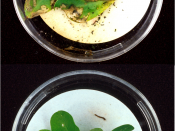Living Drugs: application of genetically modified viruses in cancer treatment
Unlike any other families of organisms which may be beneficial or even essential to the well-being of each other and the environment, the nature of virus life cycle fated them pathogenic and purely harmful to their hosts. In fact the word "virus" simply means venom (Edward K. Weigner, 1999). But now with a maturing understanding of genetic engineering and recombinant technology, we can expect to create biological therapeutic agents from genetically modified strains of viruses that can overcome difficulties and side effects of existing chemo-therapeutic agents for cancer treatment. These genetically modified members of these simple microorganisms show exceptional potential value as tools to vaccinate against or treat, since such "living" drugs can be specifically designed to attack certain weaknesses of carcinogenic cells and efficiently preventing them from causing sickness.
Viruses are the only obligate parasitic organisms without their own metabolism, some even regard it as non-living infectious particles.
A virus may be as simple as a chunk of DNA or RNA surrounded with a protein envelope, or may include composite structures such as these observed in certain retroviruses and bactriophage. (Wagner, Edward K., 1999) But even genome of the most genetically complex virus, cytomegalovirus, which has the largest genome of about 230 kilo base-pairs (Martin Messerle, 2002), are way smaller than the genome of smallest free-living life form which consist of about 580 kilo base-pairs (Fraser, et al., 1995), found in a mycoplasma M. genitalium. As a consequence of simplicity of viruses, they are much easier to work with than other free-living organisms. (Clyde Hutchison, 2001) It will soon be a relatively easy matter to tinker with existing microorganisms to create new varieties. Which can be custom designed to cure certain disease including cancer.
Earlier experiments and trials of...


